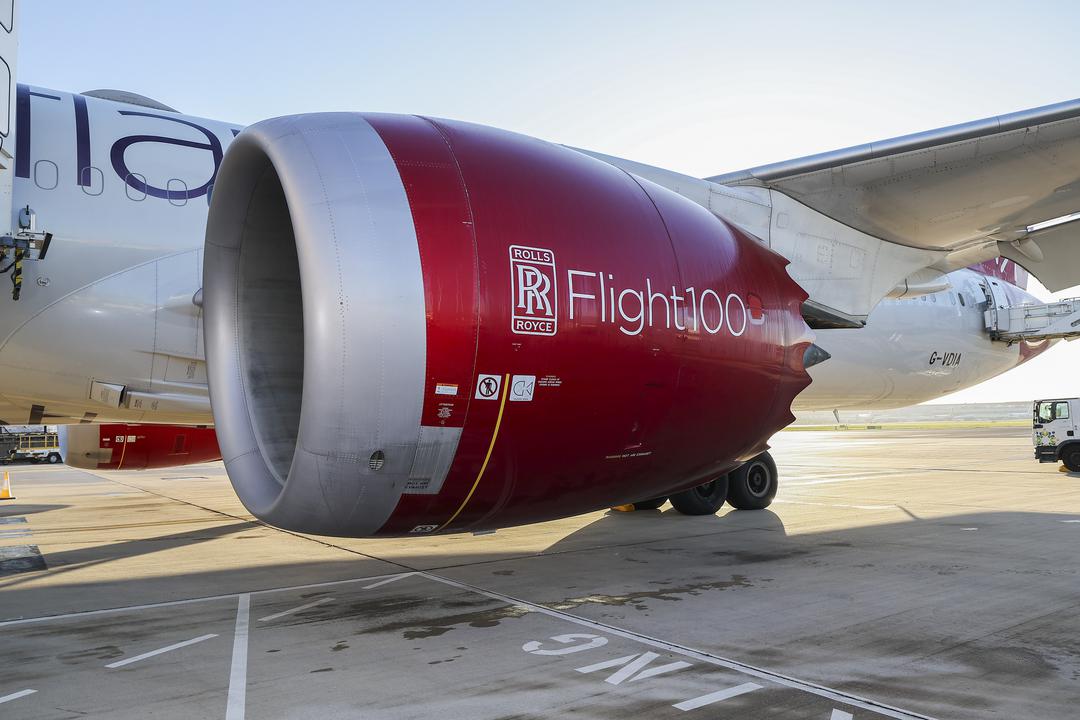Virgin Atlantic made historical past on Tuesday by crossing the Atlantic Ocean with a jetliner powered totally by sustainable aviation gasoline (SAF).
Flying from London’s Heathrow Airport (LHR) to New York’s John F. Kennedy Worldwide Airport (JFK), a Virgin Atlantic 787 Dreamliner — powered by twin Rolls Royce Trent 1000 engines — turned the primary business aircraft to fly a aircraft throughout the Atlantic utilizing 100% SAF, relatively than conventional kerosene-based gasoline. It follows a comparable demonstration flight by a Gulfstream G600 non-public jet final week.
Need extra aviation information? Join TPG’s free biweekly Aviation publication.
Tuesday’s flight, which was partially funded by the British authorities, has been broadly heralded as a proof of idea, of kinds, demonstrating the feasibility of the aviation business’s plan to decarbonize within the coming years and many years. Whereas the flight didn’t carry paying passengers, airline founder Richard Branson, CEO Shai Weiss, and Britain’s transport minister Mark Harper had been on board, together with different executives, politicians, and media — together with TPG’s Nicky Kelvin.
SAF is produced from waste merchandise, primarily from cooking oils, animal fat and byproducts of corn manufacturing. Whereas the fuels burn equally to kerosene and nonetheless produce emissions, the general “lifecycle” emissions are as much as 70% decrease — partly as a result of, by emitting carbon that had beforehand been absorbed by vegetation and animals, the fuels don’t contribute as many “new” carbon emissions into the air, versus the case when burning and producing fossil-based fuels.
Whereas business aviation generates 2% to three% of all emissions globally, in accordance with most estimates, it stays among the many most tough industries to decarbonize. Various power varieties like electrical energy stay many years away from being developed sufficient to work for long-haul flights, and probably the most emission-heavy flights are inclined to cross oceans and continents, that means there isn’t any greener different technique of transport that can be utilized.
Airways have been bullish on SAF as a part of their plan to succeed in “internet zero” by 2050, together with different applied sciences like direct carbon seize. Airways undertaking that SAF will account for roughly 65% of the emissions reductions it hopes to realize by 2050.
Tips on how to get in: Finest bank cards for airport lounge entry
Nevertheless, there are quite a few challenges to the widespread adoption of SAF. Industrial engines are usually not but licensed to fly on greater than a mix of fifty% SAF — Tuesday’s flight obtained particular approval from U.Okay. regulators, and can fly again to London utilizing common gasoline.

Day by day Publication
Reward your inbox with the TPG Day by day publication
Be a part of over 700,000 readers for breaking information, in-depth guides and unique offers from TPG’s consultants
Provides of SAF and common manufacturing stay too low to enter widespread use. It is scarce and costly, and presently accounts for lower than 0.1% of aviation gasoline used internationally, in accordance with the BBC.
Airline bosses have stated that widespread adoption with out authorities assist could be nearly unattainable as a result of present prices. Within the U.S., the Inflation Discount Act of 2022 contains credit for SAF manufacturing which might be anticipated to contribute in direction of scaling up manufacturing.
Critics have additionally argued that SAF have to be seen as a stepping stone, relatively than an outright resolution, given potential environmental impacts of manufacturing it, together with redirecting land for agricultural use .
Cat Hewitt, coverage director on the Aviation Setting Federation, instructed CNN the flight was extra of a gimmick than a real step ahead.
“Till we’ve got genuinely zero-emission expertise out there for flying, there’s actually one factor that we all know undoubtedly works to chop aviation emissions — and that is to fly much less,” Hewitt stated.
However, Tuesday’s flight is anticipated to lift consciousness of SAF and its potential to at the least have some constructive impression, as gasoline producers, airline executives and engine producers proceed to work with regulators to hunt approval to make use of as much as 100% SAF on business flights.
Associated studying:

